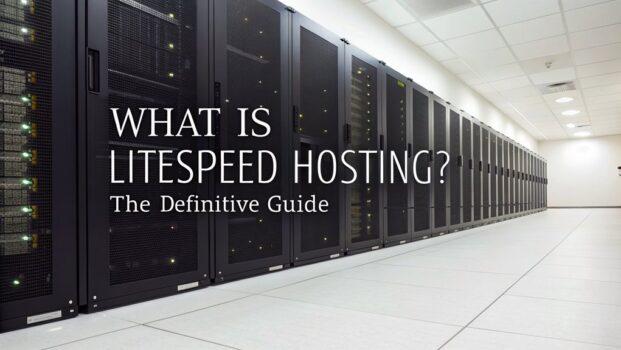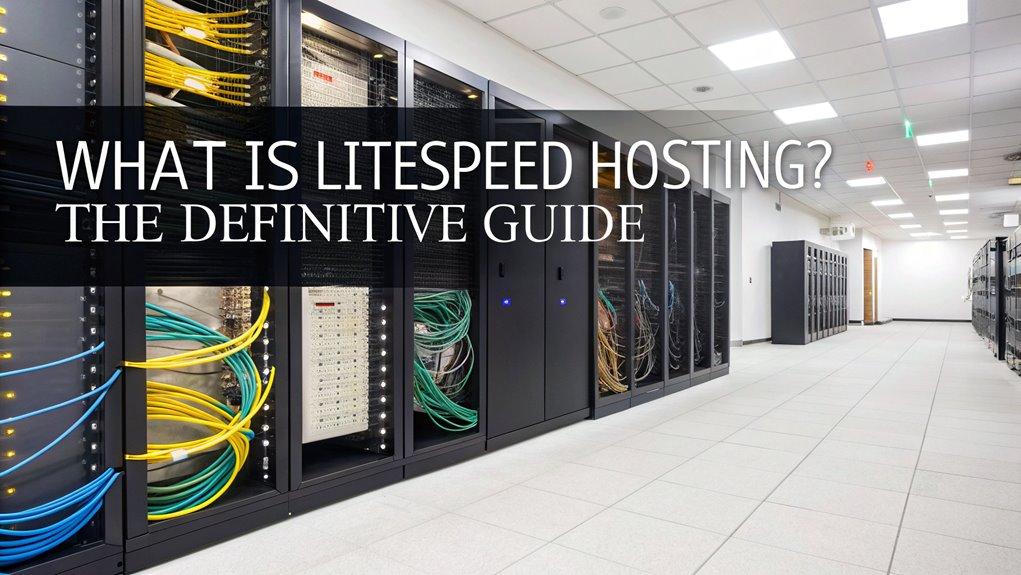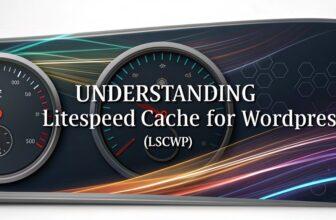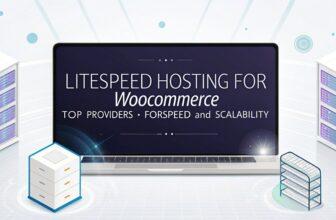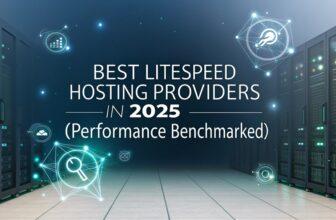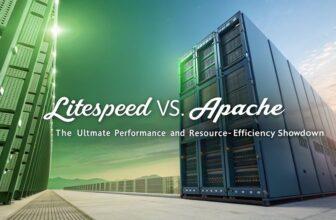LiteSpeed hosting offers a high-performance alternative to traditional Apache servers, boasting an event-driven architecture for optimal resource management and rapid PHP processing via LSAPI technology. It’s a drop-in replacement for Apache, allowing seamless transitions with minimal configuration changes. Key features include built-in anti-DDoS protection, HTTP/3 support, and compatibility with CMS platforms like WordPress. Exploring LiteSpeed enables understanding its security, scalability, and efficiency advantages over other server options.
Key Facts Summarized
- LiteSpeed hosting offers a high-performance alternative to Apache, featuring an efficient event-driven architecture.
- It provides built-in anti-DDoS protection and real-time malware detection for enhanced security.
- LSAPI technology accelerates PHP request processing, optimizing resource efficiency and load management.
- LiteSpeed is compatible with popular CMS platforms like WordPress and Joomla, supporting scalability.
- Transitioning from Apache to LiteSpeed requires minimal configuration changes, ensuring seamless migration.
Understanding Web Servers
Web servers are the backbone of the internet, seamlessly integrating hardware and software to facilitate communication via protocols like HTTP.
When comparing LiteSpeed and Apache, you notice distinct differences in their architecture and performance. LiteSpeed, with its event-driven architecture, offers a significant performance boost by efficiently managing numerous simultaneous connections, unlike Apache’s process-driven model.
This design reduces resource consumption and enhances speed, making LiteSpeed ideal for high-traffic environments. As a web server, LiteSpeed excels in serving multiple web pages simultaneously, reducing load times significantly compared to traditional servers.
It’s a robust choice for those seeking enhanced performance and scalability in web hosting. Understanding these distinctions helps you choose the right server for your needs, ensuring optimal web performance.
Overview of LiteSpeed Web Server
With a solid grasp of web server fundamentals, you can now appreciate the distinct advantages that the LiteSpeed Web Server brings to the table. As a high-performance alternative to Apache, LiteSpeed Web Servers are engineered to boost performance while maintaining compatibility with existing configurations. Its event-driven architecture efficiently manages thousands of connections, outperforming traditional server software. Transitioning from Apache to LiteSpeed is seamless, requiring minimal configuration.
| Feature | Benefit |
|---|---|
| Event-driven architecture | Handles numerous connections efficiently |
| Built-in anti-DDoS | Provides robust security measures |
| HTTP/3 support | Embraces modern web technologies |
| LASPI | Enhances dynamic content delivery |
Globally, LiteSpeed is the fourth most popular server software, celebrated for its efficiency and stability, making it a strategic choice for optimizing web performance.
Key Features of LiteSpeed Hosting
Although transitioning to a new hosting environment can often be daunting, LiteSpeed Hosting simplifies this process by offering a range of key features designed to optimize performance and enhance security.
As a direct drop-in replacement for the Apache server, LiteSpeed hosting ensures seamless migration without configuration changes, maintaining compatibility with existing web applications.
Its LSAPI technology processes PHP requests with high performance, boosting website speed beyond traditional servers. The platform is engineered for resource efficiency, managing higher traffic loads with reduced consumption.
Security is bolstered with built-in anti-DDoS protection and real-time malware detection, safeguarding your digital assets.
Furthermore, LiteSpeed hosting seamlessly integrates with popular CMS platforms like WordPress and Joomla, offering scalability for various website sizes.
Performance Benefits of LiteSpeed
Building upon the robust feature set of LiteSpeed Hosting, let’s explore how its performance advantages can transform your web experience.
LiteSpeed servers utilize a cutting-edge event-driven architecture, enabling superior resource management by handling thousands of simultaneous connections with minimal overhead. This drastically improves website performance compared to traditional process-based servers.
Key performance benefits include:
- Fast load times: The LSAPI efficiently processes PHP requests, ensuring rapid page delivery.
- Optimized caching: Built-in server-side and object caching reduce server load, enhancing response times.
- Stability under stress: Handles traffic spikes and DDoS attacks without extra hardware, maintaining performance.
Moreover, its compatibility with scripting languages like PHP, Python, and Ruby on Rails ensures seamless handling of dynamic content, further boosting load times and overall website performance.
Comparing Litespeed With Apache and NGINX
When evaluating web server options, LiteSpeed, Apache, and NGINX stand out for their unique architectures and performance capabilities.
The LiteSpeed web server leverages an event-driven architecture, enabling efficient handling of thousands of connections with minimal resource usage. In contrast, Apache servers use a process-based model, which can increase resource consumption and slow performance under heavy traffic.
LiteSpeed excels in serving dynamic content, utilizing LSAPI for faster PHP processing, unlike NGINX, which may need additional configurations.
Additionally, LiteSpeed boasts built-in features like anti-DDoS protection and ModSecurity compatibility, enhancing security without extra modules.
Performance benchmarks often favor LiteSpeed, showing up to 50% faster load times and better handling of high traffic compared to both Apache and NGINX.
Transitioning to Litespeed From Apache
If you’re considering a switch to LiteSpeed from Apache, you’ll find the transition remarkably straightforward due to LiteSpeed’s design as a drop-in replacement.
This design allows the LiteSpeed web server to read Apache configuration files directly, eliminating the need for extensive modifications.
When switching from Apache, here’s what you should do:
- Verify Compatibility: Ensure your server resources meet LiteSpeed’s hosting needs.
- Utilize the Control Panel: Leverage the automatic switch option to streamline the transition process.
- Test Thoroughly: Post-transition, test all websites to ensure they load quickly and function properly.
This transition can be accomplished in under 15 minutes with zero downtime.
Configuring LiteSpeed for Optimal Performance
To configure LiteSpeed for optimal performance, it’s crucial to focus on caching and optimization settings that will maximize your server’s efficiency.
Enabling caching settings through the LiteSpeed cache plugin significantly reduces load times. By serving static content from memory, you alleviate the need to process PHP scripts for each request, optimizing performance.
Properly manage resources with server-side caching—features like object caching and image optimization enhance your site’s speed. Set an appropriate Time-To-Live (TTL) for cached content to balance prompt updates and resource efficiency.
Implement Lazy Load Images to defer loading until images enter the user’s viewport, enhancing load speed.
Adjust CSS and JavaScript by enabling minification and file combination, reducing requests and optimizing file sizes.
Testing and Optimizing Your LiteSpeed Server
After transitioning to LiteSpeed, it’s essential to verify website functionality by meticulously checking URLs and internal links to ensure seamless operations.
Utilize LiteSpeed’s robust optimization features like caching configurations and security adjustments to significantly enhance performance metrics.
Regularly fine-tune your server settings and monitor performance analytics to achieve a tailored, high-speed user experience.
Verify Website Functionality
Ensuring your website functions seamlessly after transitioning to LiteSpeed requires a meticulous approach. First, verify your website’s functionality by scrutinizing URLs and internal links. This ensures all pathways operate correctly, supporting optimal performance.
Then, assess any custom configurations tailored during the transition, confirming their accuracy and effectiveness in the new LiteSpeed environment. Comprehensive testing is essential to identify potential issues that might affect performance, maintaining expected operational standards.
- Performance Monitoring: Regularly monitor server performance to identify areas needing optimization, ensuring your site runs efficiently.
- Functionality Verification: Check all site elements, ensuring they function as intended post-transition.
- Optimization Analysis: Review server settings for potential enhancements, balancing speed and security.
These steps ensure your site’s robust performance and user satisfaction.
Explore Optimization Features
While transitioning to LiteSpeed, embracing its optimization features is crucial for maximizing server performance.
You’ll want to dive into caching setups, which play a pivotal role in reducing load and server response times. Adjust these settings via the LiteSpeed control panel to meet your specific performance needs, ensuring optimal resource utilization.
Regular testing is essential; it helps pinpoint issues and allows for timely adjustments to your configuration. Implementing robust security measures like DDoS protection is another vital step.
Regular Maintenance for LiteSpeed Hosting
Regular maintenance of your LiteSpeed hosting is crucial for leveraging its full capabilities, and it begins with consistently updating to the latest server software.
By monitoring server performance, you can analyze resource allocation and adjust configurations to enhance throughput and minimize latency.
Comparing performance metrics over time will highlight trends, enabling proactive measures to ensure robust and secure hosting.
Update LiteSpeed Regularly
Although often overlooked, updating LiteSpeed regularly is crucial for maintaining an efficient and secure hosting environment. Keeping your server up-to-date ensures you have the latest performance enhancements and security patches, directly impacting your website’s speed and stability.
Regular updates help mitigate vulnerabilities and protect against potential threats, including DDoS attacks. By doing so, you ensure that your hosting environment is robust and resilient.
Consider the following benefits:
- Performance Enhancements: Updates often include optimizations that enhance the speed and efficiency of your server.
- Security Patches: Critical updates safeguard your server from vulnerabilities and cyber threats.
- Compatibility Issues: Regular updates ensure seamless integration with web applications and plugins, preventing deprecated feature-related issues.
Neglecting updates could lead to compatibility issues and compromised security.
Monitor Server Performance
After ensuring your LiteSpeed server is up-to-date, focus on monitoring server performance to maintain optimal site speed and reliability. Utilize LiteSpeed hosting’s built-in tools to track resource utilization, request handling, and response times. This proactive approach helps you address potential bottlenecks. Analyzing performance data trends allows you to adjust server configurations and caching settings, ensuring performance improvements. Regularly reviewing error logs and metrics is crucial for spotting anomalies that might affect user experience.
| Metric | Purpose | Actionable Insight |
|---|---|---|
| Resource Utilization | Analyzes CPU and memory usage | Optimize resource allocations |
| Request Handling | Tracks incoming requests | Adjust server configurations |
| Response Times | Measures server speed | Implement performance improvements |
| Error Logs | Identifies server anomalies | Troubleshoot server issues |
| Performance Trends | Observes long-term performance | Refine caching and server strategies |
Exploring LiteSpeed Hosting Plans and Providers
How do you navigate the diverse landscape of LiteSpeed hosting plans and providers?
Start by examining the options available, such as shared hosting, VPS, and dedicated servers, each offering varying resource allocation and performance capabilities.
LiteSpeed hosting providers like A2 Hosting, GreenGeeks, and ScalaHosting integrate advanced features like one-click deployment and SSL support to enhance your website’s efficiency.
Consider these factors when choosing your provider:
- Performance Optimization: Providers like SiteGround and DreamHost use built-in caching to maximize speed and user experience.
- Pricing Structures: Look for competitive pricing with introductory offers starting as low as $3.99 per month.
- Customer Support and Reviews: Evaluate providers based on data center locations and customer feedback for informed decision-making.
Select wisely to meet your specific needs.
Frequently Asked Questions
What Is Litespeed Hosting?
Imagine your website’s performance as a racecar speeding down the track; LiteSpeed hosting is the turbo boost you need.
It’s a high-performance alternative to Apache, utilizing an event-driven architecture for efficient request handling. You’ll experience reduced server load and enhanced security with built-in anti-DDoS protection.
Its compatibility with Apache files ensures smooth transitions, while scalability supports everything from blogs to e-commerce.
It’s a tech-savvy choice for superior speed and reliability.
What Does Litespeed Do?
LiteSpeed enhances your website’s performance by efficiently managing concurrent connections with its event-driven architecture. It serves multiple pages simultaneously, reducing load times compared to Apache.
You’ll find it supports dynamic content through LASPI and various scripting languages like PHP and Python. With built-in DDoS protection and ModSecurity compatibility, LiteSpeed secures your site against attacks.
Plus, transitioning from Apache is seamless, requiring minimal configuration changes, making it user-friendly.
Is LiteSpeed Apache or Nginx?
LiteSpeed isn’t Apache or NGINX; it’s like a sleek sports car compared to standard sedans.
It offers an event-driven architecture, giving you efficient connection handling with fewer resources. LiteSpeed surpasses Apache and NGINX in performance, especially for dynamic content and high-traffic scenarios.
You’ll find it supports HTTP/3, enhancing connection speeds and reducing latency.
While Apache remains more common, LiteSpeed’s gaining traction due to its speed and security advantages.
What Is Litespeed in WordPress?
LiteSpeed in WordPress dramatically boosts your site’s performance by using the LiteSpeed web server, which outperforms traditional servers like Apache.
You’ll benefit from the LiteSpeed Cache plugin, which provides server-side caching for faster page loads without leaning heavily on PHP.
With features like image optimization and JavaScript minification, your site’s speed and security, including anti-DDoS and malware defenses, are enhanced, offering a seamless transition from Apache with minimal configuration changes.
Conclusion
Navigating the vast sea of web hosting, you’ve discovered LiteSpeed—a powerful vessel in the hosting fleet. With its blazing speed, robust features, and superior performance compared to Apache and NGINX, LiteSpeed is your trusty compass. By fine-tuning its configuration and maintaining regular upkeep, you ensure smooth sailing for your websites. As you explore hosting plans and providers, remember that LiteSpeed is your beacon, lighting the way to optimal web performance and reliability.

